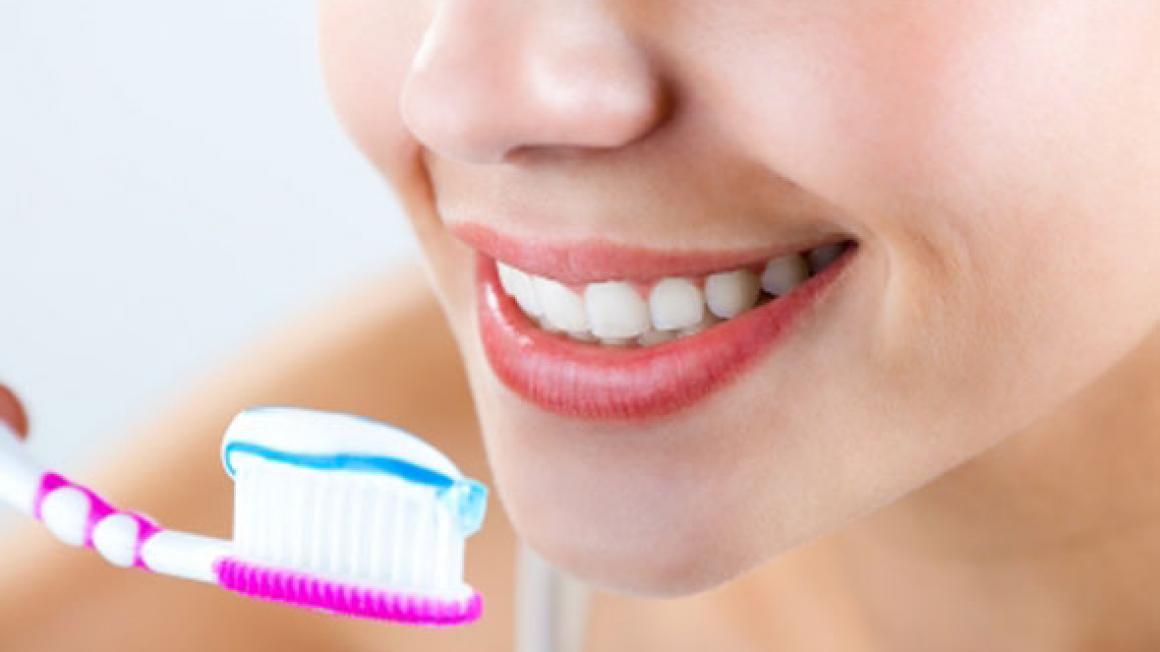Top Tips: Teeth Whitening
Floss-Wash-Brush:
He said: "As a general rule, the reason I champion the Floss-Wash-Brush regime is simply down to the fact it is better to remove plaque and food debris with floss before rinsing the bacteria away with an alcohol free mouth wash.
"Ideally, you should finish your oral care routine by brushing your teeth. That way, the toothpaste stays in contact with your teeth and gums for longer and will therefore provide better protection."
When it comes to our beauty regime, many of us rigorously follow our cleanse-tone-moisturise routine but to ensure we also have a smile to be proud of, Matthew claims we must think of oral care the same way we do our skin.
He continued: "The Floss-Wash-Brush method works in the same way as the cleanse-tone-moisturise routine does, by following it you'll have a smile to be proud of for years to come"
Demystifying oral care myths is part of Matthew's job as a dentist and keeping things transparent is key when developing premium teeth whitening and oral care products for WhiteWash Laboratories.
Whitening toothpastes
"I often get asked if whitening toothpastes work and the short answer is – yes, but they work by removing and preventing the build-up of surface stains, helping to restore teeth back to their natural whiteness. You may expect to achieve a half, to a whole shade whiter teeth whilst using a whitening toothpaste, so depending on how white you would like your smile to be, you may want to consider chemical whitening," Matthew said.
It seems knowledge is power when it comes to purchasing oral health care products especially when it comes to trends. Over the last year the UK has seen a surge in "oil pulling" and "whitening strips" but Matthew says they should be clearer about their function.
Oil pulling and whitening strips
"Oil pulling is not a new phenomenon, it's been around for centuries and although it's great at reducing the harmful bacteria in your mouth it won't physically whiten your teeth.
"Clarity is key here, the same goes for non-peroxide whitening strips. Those that can be bought without a prescription over the counter could be more accurately described as stain removal strips because the simple truth is that over the counter products usually contain mild acids to remove stains, however these acids can erode tooth enamel, so it's best to avoid these products or buy quality, dental strength strips through your dentist."
In the spirit of the pending New Year, Matthew is inspiring his patients and customers with a new approach in oral care combing the Floss-Wash-Brush method.
Top ten teeth tips
1. Brush before breakfast - This is the ideal time as tooth decay is caused by the bacteria in our mouths using the food we eat to produce acid causing our teeth to decay.
2. Go alcohol free - Alcohol is the main ingredient in a lot of products on the market because of its high ability to kill bad bacteria but it also kills good bacteria in the mouth.
3. Manual brush method - Angle the brush at 45 degrees to the gum line. The average brush head will cover two teeth, clean around in a circular motion for around 5 seconds and then move forward one tooth at a time repeating the same circular cleaning action for five seconds. (Don't forget to brush your tongue!)
4. Two minutes, twice a day- Use the timer on your phone to ensure you are spending at least 2 minutes brushing your teeth (twice a day)
5. Sensitive gums? If you have sensitive gums I recommend using a rotating toothbrush.
6. Avoid eating for an hour before bed – This is so the saliva in your mouth has a chance to clear away food debris and neutralise acid.
7. A pea sized amount - I often get asked how much toothpaste you should use when brushing your teeth. The answer? A pea sized amount.
8. Don't wet tooth bristles straight away- Avoid wetting the bristles on your brush straight away to improve plaque removal.
9. Bleeding gums - If you have just started flossing your gums may be sore and might bleed but if you get into the routine of flossing then after a week or so the bleeding should stop. If you find your gums still bleed, see a dentist.
10. Remember the 4:2 rule - If you brush twice a day for 2 minutes each time, then your teeth are protected so you can eat four times throughout the day, so breakfast, lunch, tea and one snack. If you eat or drink more than 4 times in a day, then it is important that you brush your three times a day.


